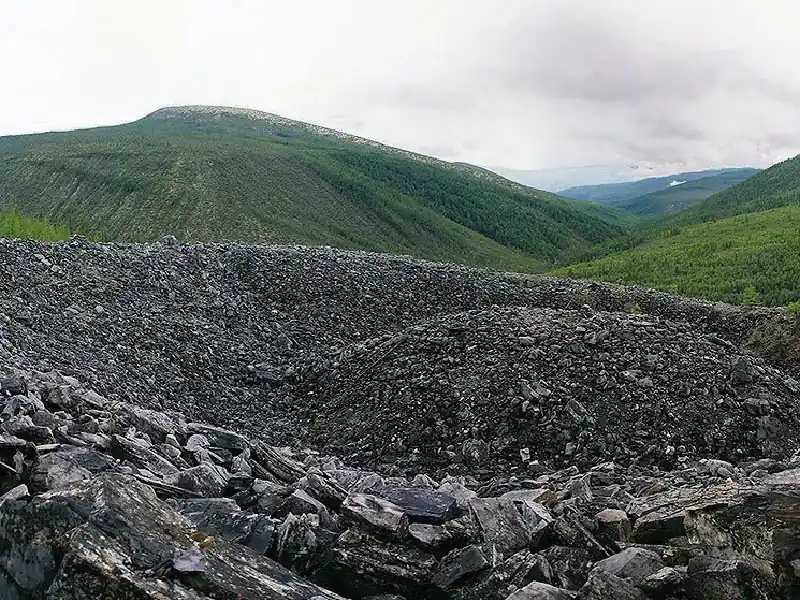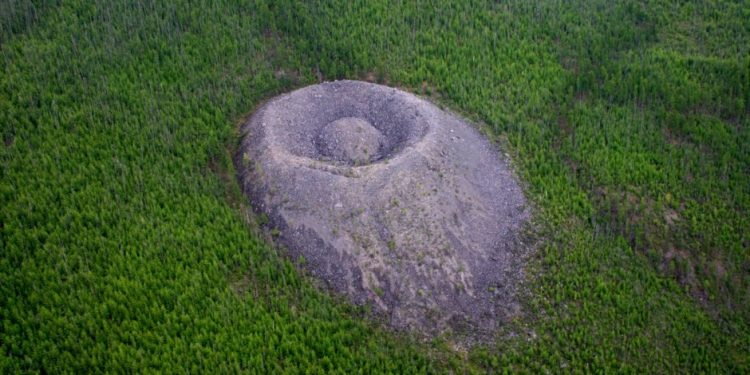This living crater in Siberia has left scientists confused for more than 70 years. Known as the Patomskiy Crater, it rises out of the forest like a massive stone mound—and it doesn’t stay still. Its shape changes over time, and no one agrees on what caused it.
A crater unlike anything on Earth
In the dense wilderness of Irkutsk, Russia, deep within the isolated landscape of southeastern Siberia, sits one of the world’s most mysterious geological formations: the Patomskiy Crater. Often called the living crater in Siberia, it rises like a massive stone cone from the forest floor—80 meters tall, 150 meters wide, and weighing nearly one million tons.

Discovered in 1949, the site immediately baffled researchers. The structure resembles no other natural landform in the region. It features a central mound within a funnel-like depression, a shape more reminiscent of artificial or catastrophic impact structures than of known geologic processes. But the strangest thing about it is not its size or form—it’s the fact that it moves.
Over the decades, researchers have recorded subtle but measurable changes in the crater’s shape. Some reports suggest the entire structure periodically swells or collapses, almost as if the ground beneath is breathing. Surrounding trees grow at an abnormal rate, leading some scientists to suggest the presence of underground energy or chemical anomalies.
No one agrees on what created it
Since its discovery, the origin of the living crater in Siberia has remained a topic of ongoing scientific dispute. One early theory proposed that it formed after a massive meteorite impact, but no fragments or extraterrestrial materials have ever been recovered at the site. Others believed it might be the result of a secret nuclear explosion during Soviet testing, though no radiation has been detected.
Some geologists proposed volcanic activity as a possible explanation. However, the area around the crater is not volcanic, and the structure does not resemble typical volcanic cones or lava domes. In fact, many researchers argue that no known geological process in the region could have formed something like this.
The Russian geologist Viktor Sergeyevich Antipin, from the St. Petersburg Institute of Geochemistry, offered a grounded explanation in 2010. He concluded that the crater likely formed as a result of subsurface geological processes involving gas emissions or rock displacement—not a meteorite or extraterrestrial force. However, he acknowledged that the exact mechanism remains unidentified.
Theories, probes, and a buried mystery
One of the most persistent theories is that a large object lies buried beneath the crater—possibly a high-density iron mass or ancient meteorite. Some estimates suggest this object could be lodged as deep as 150 meters underground. But despite decades of research, no drill has reached it, and no conclusive data has been retrieved.
What keeps fueling public and scientific interest is the crater’s apparent instability. Measurements have shown vertical movement and changes in volume over time. Locals who have lived near the region for generations refer to the crater as “Eagle’s Nest” and often speak of the land as sacred.
While there are comparisons to the 1908 Tunguska event—another Siberian mystery involving a suspected explosion caused by a meteor airburst—researchers believe the living crater in Siberia is much older. Radiocarbon analysis dates its formation to around 350 years ago, predating Tunguska by nearly three centuries.
The debate continues
Researchers from institutions like Irkutsk State Technical University and the Institute of Geosphere Dynamics continue to study the site, but no definitive answers have emerged. While some still argue for a meteoritic origin, others believe the formation could be the result of unknown natural processes.
What makes the Patomskiy Crater so compelling is not just its mysterious origin, but the fact that it continues to evolve. With shifting shape, unusual tree growth, and no clear explanation, the living crater in Siberia remains one of Earth’s most enigmatic natural anomalies—still defying science, 70 years after its discovery.











